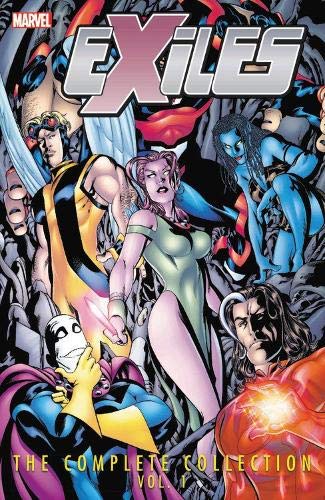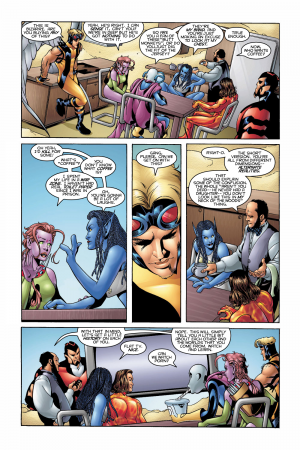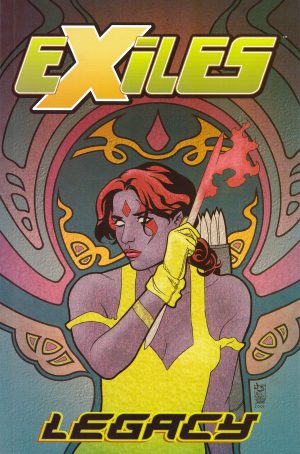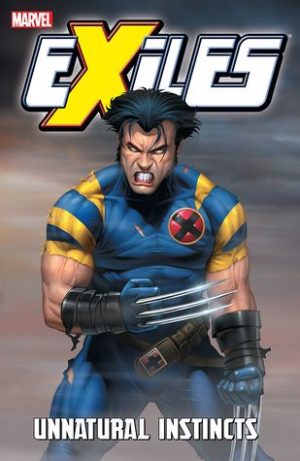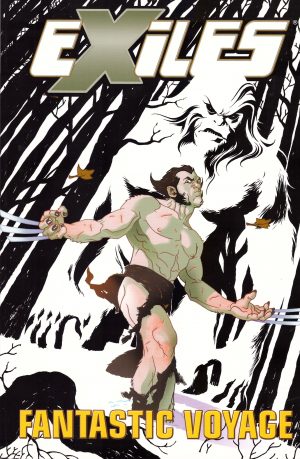Review by Ian Keogh
The deal is this: a team of six superheroes, each from a different version of Earth, jump from one alternate world to the next attempting to fix a problem. Fix it, and they’re away to the next world, with the hope that once all the problems are solved they’ll be able to return back to their own worlds, their futures unchanged. If they die, they’re dead, and if for whatever reason they remain behind, they’re stuck on that world. In either case they’re immediately replaced as the Exiles are allocated a new member.
Yes, Exiles applies the premise of TV show Quantum Leap to comics while also taking a tour of alternate Marvel worlds that had become very tired in What If… ? After a so-so start in which much needs to be explained, Judd Winick settles into the formula nicely. The only restriction on him appears to have been that as the x in the title logo is emphasised all the team members have to be somehow connected with the X-Men, although that leaves him a considerable choice of characters with which to construct the optimum range of super powers. Blink is hauled in from the X-Men’s Age of Apocalypse era, Mimic from the very early X-Men, able to copy five super powers at a time. A genetically altered Thunderbird is raw power, Morph a shape changer, Nocturne a female Nightcrawler, and Magnus the child of Magneto and Rogue who turns people to metal with a single touch.
Credit is due for what becomes by the end of this collection a predominantly female team, and Winick is imaginative with the worlds visited. We see an Earth overrun by Skrulls where Galactus comes calling, a world where the Hulk is Canada’s problem, Dr Doom and Sub-Mariner at war, and another team of familiar faces whose mission seems the same as the Exiles. Throughout Winick raises ethical questions and explores the characters of his team. Morph is the motor-mouthed comedy relief with visuals to match, while Mimic proves quite the dark horse, and Blink a very capable leader.
Mike McKone as starting artist is just fine, and he draws most of the book cleanly with an attention to personality. Jim Calafiore illustrates the remainder, at first approximating McKone’s viewpoints and layouts, but subsequently evolving his own style. This isn’t as satisfactory, with oddly twisted bodies and expressions that oversell any emotion. Not that McKone is perfect. His design for a massive genetically altered Thunderbird doesn’t sit well alongside the other characters.
Winick takes a few chapters to work his way into the characters and premise, but rapidly hits his stride, and Exiles remains a joyful read twenty years after the original serialised comics.
